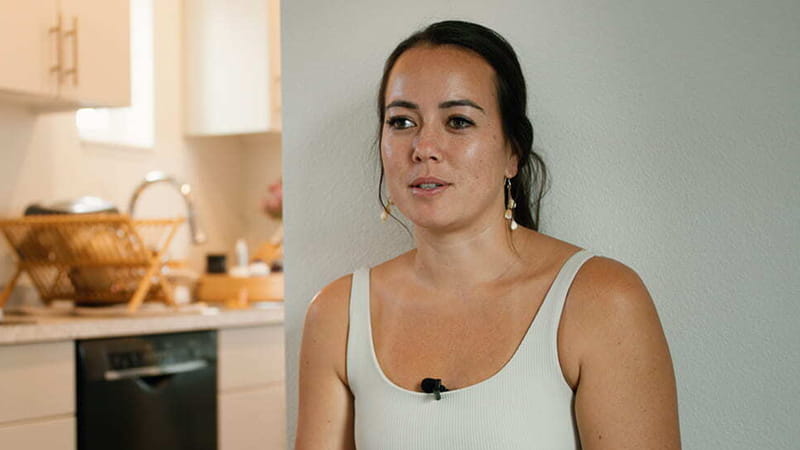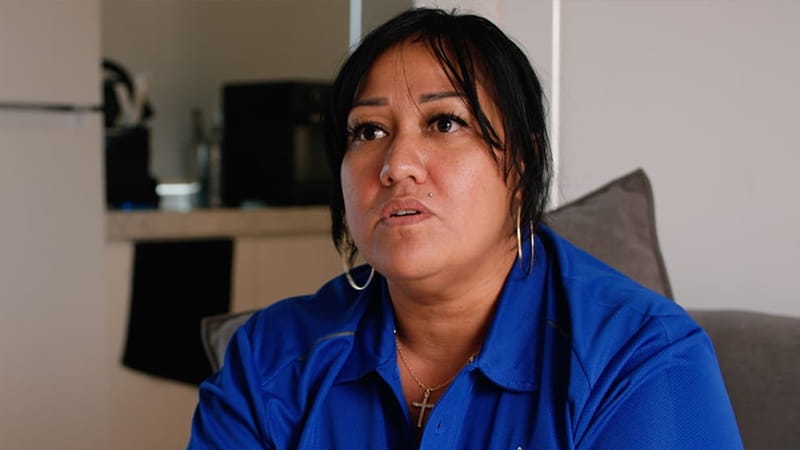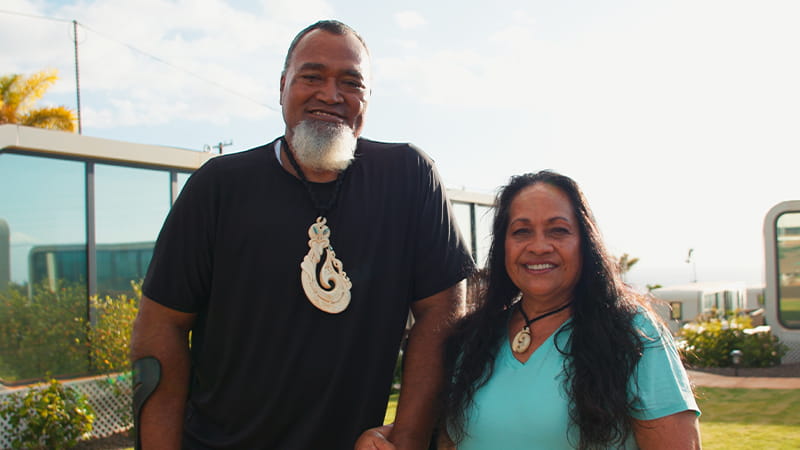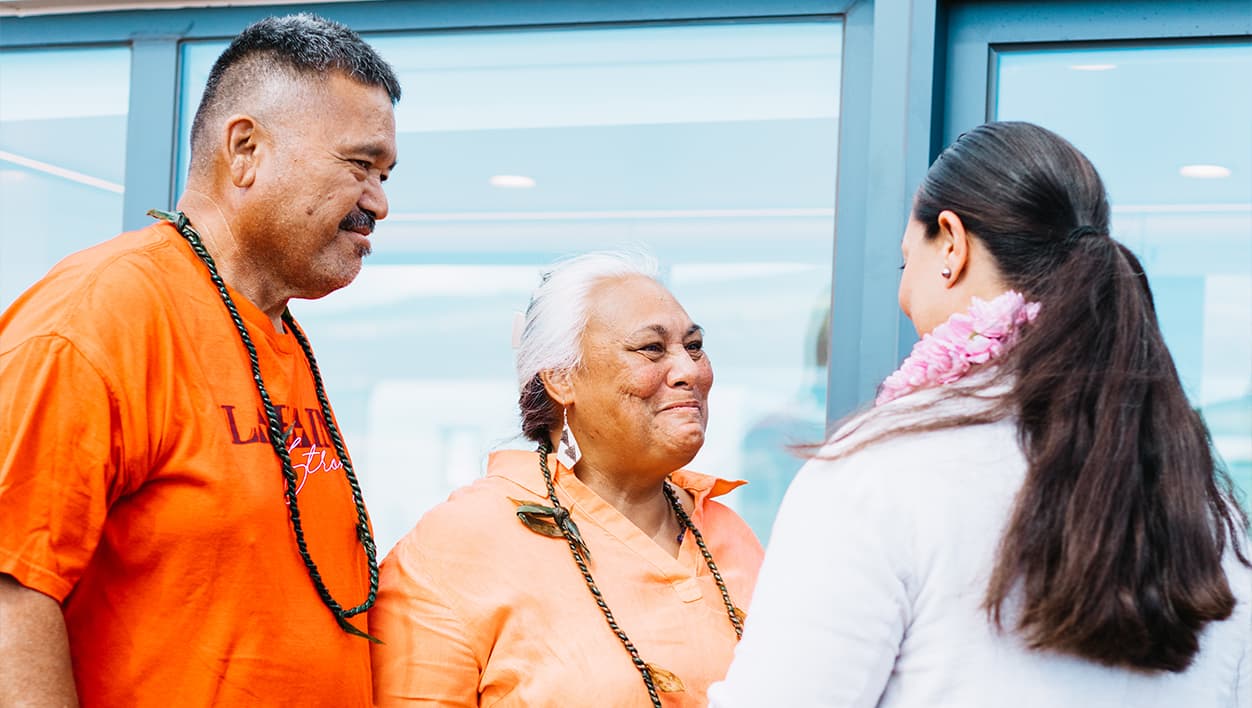
The Place of Peaceful Recovery
Ka La‘i Ola is Maui’s largest interim housing community for wildfire survivors. The 57-acre village includes 450 homes for up to 1,500 people and will serve families through 2029.
About Ka La‘i Ola
As one of the most innovative disaster recovery efforts in the nation, Ka La‘i Ola shows what is possible when modular innovation and union labor come together with urgency, collaboration, and purpose to deliver housing at unprecedented speed.
The name Ka La‘i Ola, gifted by Kumu Pueo Pata, means the Place of Peaceful Recovery. It ties the history of the ʻāina to the future of this community and reflects the purpose of the village as a place where families can recover and begin again.
The project was created through a public and private partnership that included the State of Hawai‘i, the Department of Human Services, HomeAid Hawai‘i, the Hawai‘i Community Foundation, and community partners. In 2029, the site and its infrastructure will transfer to the Department of Hawaiian Home Lands, accelerating housing for Native Hawaiians by 17 years.
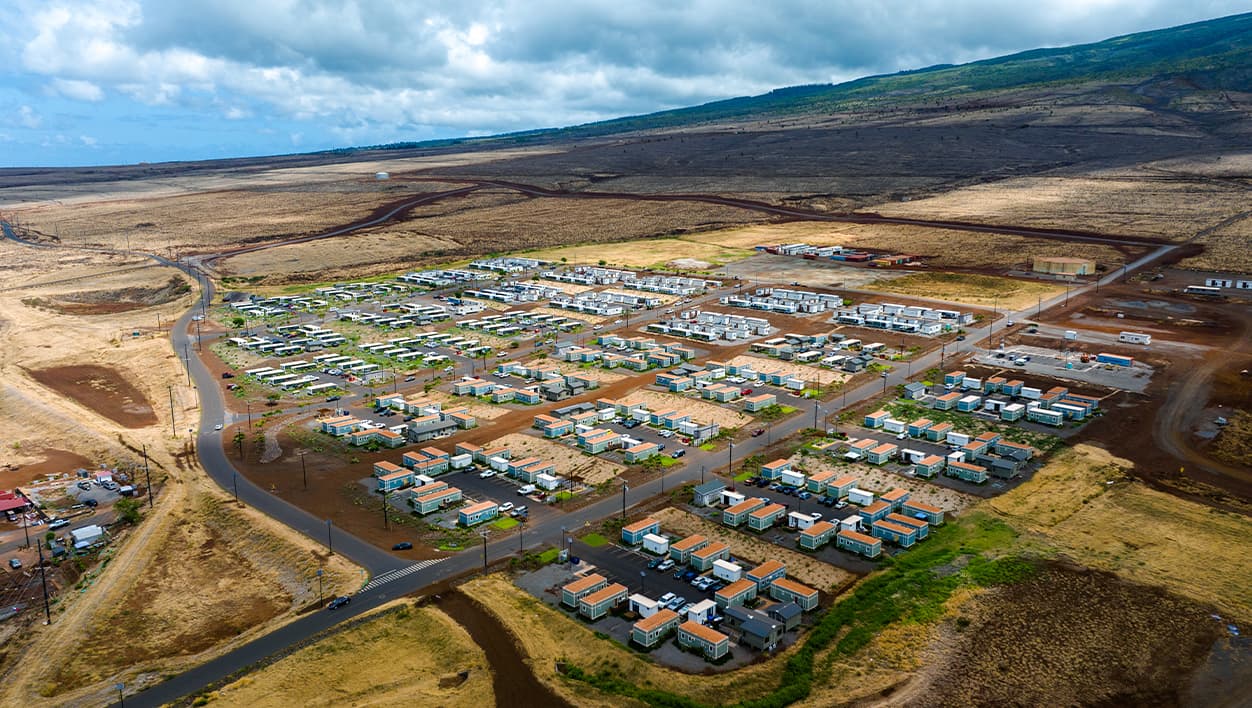
Today, nearly 900 people call the village home. Many arrived after moving through half a dozen temporary residences. Here, stability is allowing families to reestablish daily routines, while mental health support remains critical because recovery can be more traumatic than the disaster itself.
For its scale, speed, and impact, the Hawai‘i Society of Professional Engineers Maui Chapter named Ka La‘i Ola the 2025 Project of the Year.
Impact
Ka La‘i Ola Savings Breakdown
Breakdown of $106,711,355.92 in savings that reduced the true project cost.
Financial summary
- Hawai‘i’s building industry contributed over $8 million in discounted labor and supplies.
- Donors gave more than $42 million in support.
- By combining builder discounts, philanthropy, emergency proclamation savings, and donated land, HomeAid Hawai‘i lowered costs by 42 percent compared to traditional development, saving taxpayers an estimated $106 million.
- The average cost of homes, excluding infrastructure, was approximately $120,000 per unit. Includes studios, 1-bedroom, 2-bedrooms, and 3-bedrooms.
- The total project budget was $187 million.
Value engineering means finding smarter ways to design and build so projects cost less, move faster, and still deliver quality. For example, using surface swales instead of underground drainage, overhead lines instead of underground utilities, and following the land’s natural contours instead of heavy excavation.
Emergency proclamation savings come from temporary measures that reduce costs and speed up delivery. For example, projects can be exempt from the general excise tax, move forward with expedited permits instead of waiting years, and use simpler solutions like swales in place of curbs and gutters.
